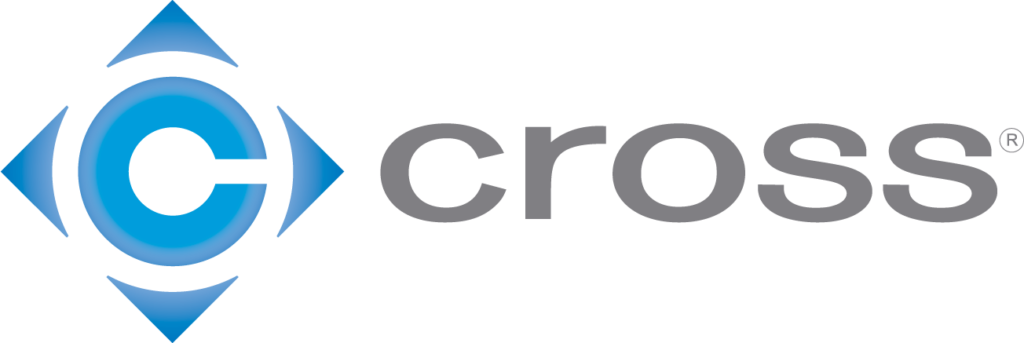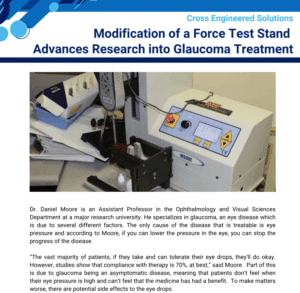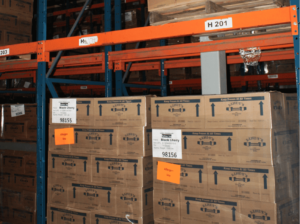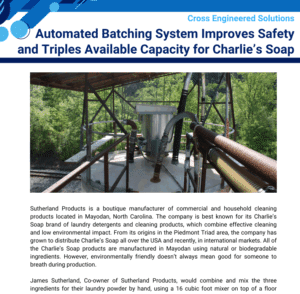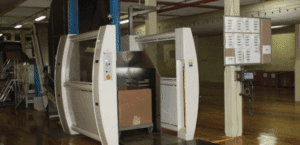Combustion Control Systems (CCS)
Gas and oil burners are everywhere. They power package boilers, start up larger furnaces with fluidized beds and grates, and heat many other processes. Larger burners have Combustion Control Systems (CCSs) which should be tuned periodically.
To understand how to tune a gas and/or oil (usually #2 Diesel oil) burner, it helps to first understand how and why they work the way they do.
What Is A Combustion Control System (CCS)?
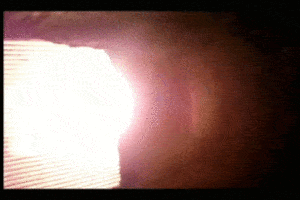
The CCS determines how much fuel, air, and water to put into the boiler, and should prevent unsafe conditions from happening in the first place. This article does not cover the BMS, we’ll focus primarily on the fuel and air aspects of the CCS (rather than water and other auxiliary components).
Jackshaft Burners
This article also does not apply to jackshaft burners, which have a single actuator driving both the combustion air damper and the fuel valve. The FAR (fuel/air ratio) for jackshaft burners is set by mechanically adjusting set-screws on the fuel valve – the CCS sends a single output to the actuator to drive both fuel and air together.
Bumpless Transfer With Set-Point and Output Tracking
A boiler CCS’s PID (proportional – integral – derivative) loops and A/M/Bias (auto / manual / bias) stations should generally be configured to track as much as possible. SPs (set-points) should track PVs (process variables) when not in auto. Cascade master outputs should track slave SPs if the slave is not in cascade (auto output and remote SP). This is important for bumpless transfer, so that loops can be switched between manual, auto, and cascade without bumping the boiler.
Please see our article about the Basics of PID Loop Tuning for more information. We recommend only two exceptions to forcing everything to track:
- The SP for drum level – please see our 3-Element Drum Level Control article for details on SP ramping.
- The O2 trim output should generally just be forced to the center when the air loop is in manual. This will cause a “bump” in reported air flow % on the transition from auto to manual, but that does not cause a real bump; the mass-flow of air is unchanged, and there is no bump when returning to auto.
Plant Master and Boiler Masters
The Plant Master is a pressure control PID loop with the main steam header pressure as PV, and the output setting the firing rate of all boilers running in auto. Each steam header should have no more than one active plant master – this means most facilities have just one plant master. Each boiler has a boiler master, which is an A/M/Bias station that handles the firing rate for that boiler. In AUTO, the boiler master receives the plant master output, biases it, and sends that % to the fuel and air flow controllers. In MANUAL, the boiler master output is adjusted by the operator. But if the fuel is not in cascade, the boiler master output tracks the fuel flow SP. If the boiler master is in manual or tracking, its bias tracks the difference between it and the plant master output.
If there is only one boiler, the output of the plant master is the boiler master and no bias is needed.
Piecewise Characterizations
A piecewise characterization (PWC) is a function block in the CCS which approximates a smooth curve by stringing together many short lines. Typically the PWC block defines the line segments with from 10 and 21 pairs of (X,Y) points. The block figures out which line segment the input is on and produces the output based on the two Y values surrounding that line. The FAR, O2 trim set-point, and output linearization curves are contained in PWC blocks.
Process Variables
If you are experienced with process controls, but this is the first time you’ve seen the standard scheme for combustion air for a gas/oil burner, you may think the logic drawing above is wrong. “Why would any sane engineer mess with the PV so extensively? Why not set the FAR by adjusting the air flow cascade set-point?”
There is a good reason to do it that way: cross-limiting (more on that below). The idea is this: the system needs to control fuel and air as “the amount of fuel and air needed for this % load”. So we convert fuel flow to % by multiplying it by a constant. We convert the air flow to % by running mass flow through the FAR PWC to get raw %, then trimming that % from the output of the O2 Trim loop. The resulting % fuel and air flows will be controlled to match the boiler master output %.
You should think of an air flow 5% below SP as “the air flow appropriate for when the boiler master is 5% lower” rather than “5% less air than I want”. That is a subtle distinction, but the resulting numbers may differ unless the FAR curve is perfectly straight.
In the absence of a proper air mass-flow meter, the windbox pressure is sometimes used as an indication of volumetric air flow, and is fed into the FAR PWC instead of flow. Otherwise the logic is the same.
Oxygen Trim
The O2 sensor detects the “excess air” – the % oxygen present in the flue gas after combustion. Typically at high loads, 3-4% O2 is desirable (earth’s atmosphere is 21% O2).
It is dangerous to put more fuel into a furnace than the air can fully combust. The products of incomplete combustion (synthesis gas is H2 and CO) or unburned fuel could fill a space in the furnace or ductwork, then later mix with air and explode. Insufficient air also results in environmentally undesirable emissions.
Too much excess air is a major cause of inefficiency. We want to heat water, but we must bring cold air (mostly nitrogen) into the furnace and exhaust warm air. The more air we blow through the furnace, the more fuel we burn just to heat nitrogen to blow out the stack instead of heating water. Excess air can also produce excess NOx in some burners.
So we want to control O2 at its ideal amount for the load. The burner manufacturer should provide an O2 trim SP curve – this should be plugged into a PWC with the output running through a bias station (always in auto!) to set the SP of the O2 trim PID loop. Operators should NOT have the option to set the O2 Trim SP – they can put the loop in manual, but in auto, the SP should always come from the biased SP curve. The O2 trim loop will then adjust the air flow PV, causing the air flow loop to add or subtract air to maintain it at the same % as the fuel flow % and boiler master %. Burner O2 trim is typically limited to adjust the air by only ±10% to ±20%.
This trim requires a bit of math in the CCS logic. There are three common ways to handle this:
- The old-school method was to have an O2 trim loop with an output scaled 0-100%. 50% is “neutral” or “centered” – no adjustment to the FAR output. The output is clamped to something like 40-60%, and that output is added to 50% (or subtracted from 150%) and then multiplied by 0.01 and the air flow FAR PWC output for the flow loop PV.
- Some modern systems have the output limited to 0.8 to 1.2, with 1.0 being centered. The output of the air flow FAR PWC can then be multiplied by the O2 trim output to set the air flow PV. This is the most simple scheme to program.
- Other modern systems have the output limited from -20% to +20%, with 0% being centered. The output is then divided by 100%, added to 1 (or subtracted from 1), and multiplied by the air flow FAR PWC output to set the air flow PV. This is a bit more complicated to program, but is more natural for operators to understand, since zero is centered.
The direction of the O2 trim loop depends on how the internal math is configured – some are direct acting (raising their outputs in response to high or rising O2), while others are reverse acting.
***Needless to say, you need to know which of those options is being used before attempting to tune the O2 trim loop.***
Cross-Limiting
The O2 trim loop does a good job maintaining the desired FAR at steady state. However, it is a slow loop, and it is possible for fuel to outrun air on a firing rate increase, or air to outrun fuel on a firing rate decrease. Either might result in a potentially explosive fuel-rich situation.
To prevent this, burner CCSs implement cross-limiting. In its most simple form, the air flow SP is the greater of the boiler master and the actual fuel flow PV (%) and the fuel flow SP is the lesser of the boiler master and the actual air flow PV (%, after it is run through the FAR PWC and O2-trimmed). This forces air to lead on firing rate increases, and fuel to lead on decreases, and ensures that if the system ever runs out of air, it will never add too much fuel.
Purge, Light-Off, and Release to Modulate
Typically, the BMS sends at least three discrete signals to the CCS. First, it requests a purge. The CCS should then take the air damper open enough to meet the purge air flow requirement. This is held anywhere from 30 seconds to 5 minutes depending on the size of the equipment and the situation. Next, the BMS requests “low fire”. The CCS commands the air damper and fuel valve to move to a mostly closed position for light-off. Once the BMS has determined that a good flame has been established, it will drop the “low fire” request and raise “release to modulate” (RTM) or “release to auto” (RTA). The CCS is then free to modulate the air and fuel as desired.
Auto Requirements
Boiler CCS PID loops must be put in auto in order. The drum level is independent, as are auxiliary loops such as continuous blowdown. Air flow must be in cascade before fuel flow, and fuel flow should be forced to manual if air flow is not in cascade. Air flow and fuel flow must both be in cascade to put the boiler master in auto.
Oil Atomizing
A stream of liquid oil spurting into a furnace is not going to burn well. It would pool on the floor and burn with a nasty, sooty flame. Liquid fuel must be atomized – sprayed as an aerosol (a fine mist) into the burner so that it essentially behaves as a gas. Some burners have an oil gun (this is what we call the tube the oil runs through from the outside of the burner into the furnace) which has very small holes to mechanically atomize the oil, but most burners spray a gas (either compressed air or steam) into the gun to atomize the oil.
This gas must be at a higher pressure than the oil in the gun, or it will not atomize properly. The emissions from the stack will be visibly ugly regardless of how much air you add if your oil is not properly atomized.
Tip: If you bleed #2 Diesel oil, don’t catch it in a Styrofoam cup. Diesel dissolves polystyrene quickly.
Duel Fuel
Some burners are designed to burn both gas and oil. Typically, they are designed to run on only one at a time, but some can swap from one to the other at low load without shutting down. There should be separate FAR curves for the different fuels. Some systems just use the oil FAR curve when both are running. Others use constants to create an equivalent % between the two fuels and add the results of the FARs together, and use the cross-limiting logic to add air to support both.
How Cross Can Help
Cross Company Process Solutions is an authorized Solutions Partner, recognized Systems Integrator, Manufacturer’s Representative, and value-added Distributor for process manufacturers in a wide range of industries. With our focus on systems integration, process instrumentation, valves and valve repair, and many other full solutions, we can ensure your facility is running the way you need it to. Check out our products, services, and solutions to see how we can add value to your process.
As members of the Control System Integrators Association (CSIA) as well as certified solutions partners for ABB, Honeywell, Rockwell, Siemens, and VTScada, Cross Company has the the experience and expertise to optimize your process. Contact our Process Solutions Group today to learn more or to get started.

